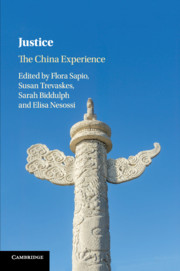Book contents
- Justice
- Justice
- Copyright page
- Contents
- Contributors
- Part I Constructing the Idea of Justice
- Part II The Performance of State Justice
- Part III Expressing Justice in the Public Arena
- Part IV Justice in Action and Law
- 11 In Search of Justice
- 12 Justice at the Margins
- 13 Bringing Politics Back In
- 14 Of Ceremonial Columns
- Index
- References
13 - Bringing Politics Back In
Access to Justice and Labour Dispute Resolution in China
from Part IV - Justice in Action and Law
Published online by Cambridge University Press: 02 August 2017
- Justice
- Justice
- Copyright page
- Contents
- Contributors
- Part I Constructing the Idea of Justice
- Part II The Performance of State Justice
- Part III Expressing Justice in the Public Arena
- Part IV Justice in Action and Law
- 11 In Search of Justice
- 12 Justice at the Margins
- 13 Bringing Politics Back In
- 14 Of Ceremonial Columns
- Index
- References
- Type
- Chapter
- Information
- JusticeThe China Experience, pp. 356 - 378Publisher: Cambridge University PressPrint publication year: 2017



